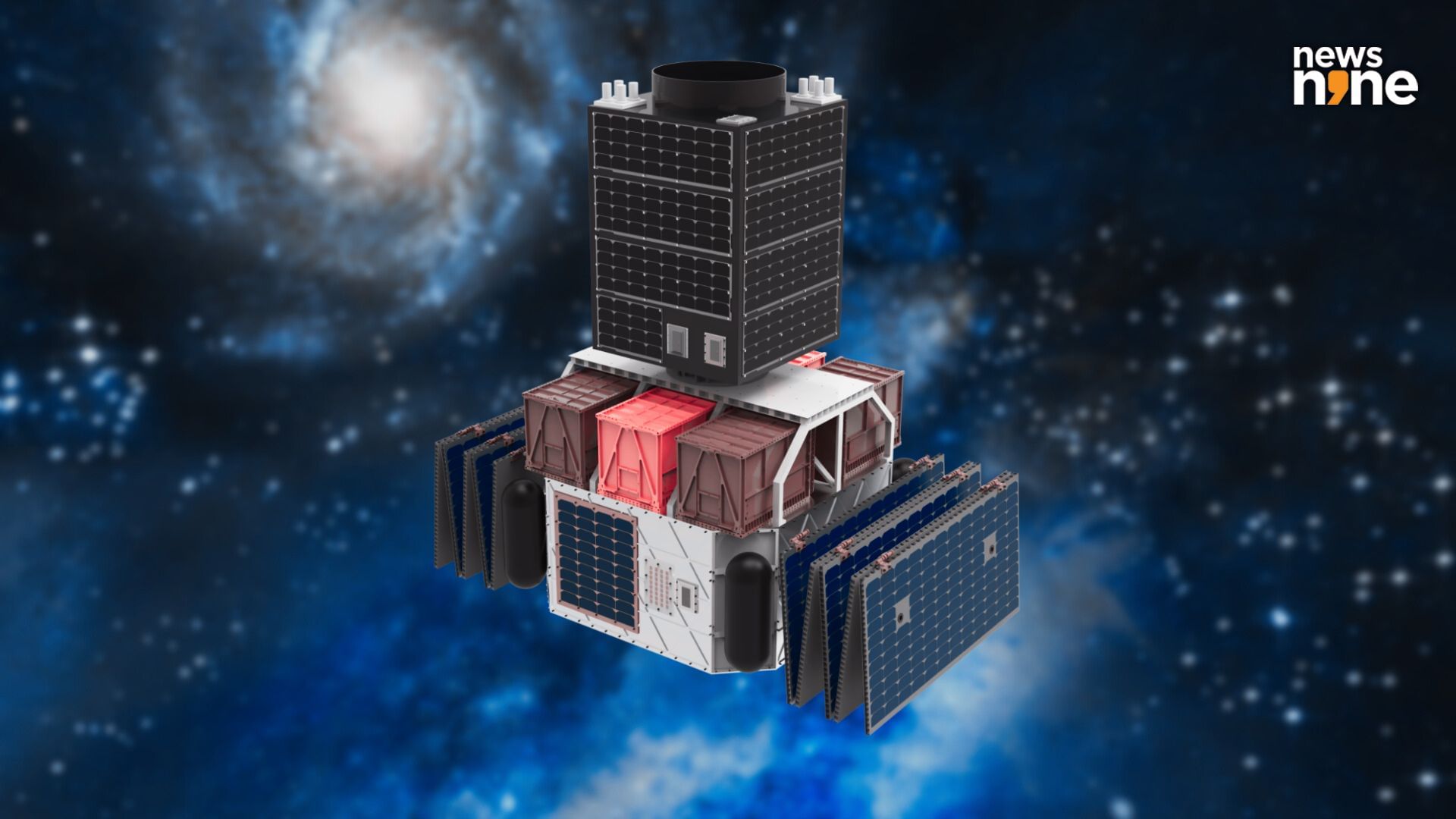New Delhi: Bellatrix Aerospace is primarily a satellite propulsion Startup from Bengaluru, that has developed environmentally friendly propulsion technologies for satellites including the Arka hall-effect thruster, the Rudra high-performance thruster that uses a green alternative to the toxic hydrazine fuel conventionally used by satellites, as well as the Jal water-based microwave plasma thruster. The Arka and Rudra thrusters have demonstrated their capabilities on ISRO’s POEM platforms, making Bellatrix Aerospace one of the most exciting NewSpace startups in the country. Late last year, Bellatrix Aerospace signed an MoU with New Space India Limited (NSIL), the commercial arm of ISRO, for the use of the Pushpak Orbital Transfer Vehicle (OTV).
The Pushpak OTV, is an innovative vehicle that can be described as a space tug, with in-orbit manoeuvring capabilities, that can deploy multiple satellites in their intended orbits. Yashas Karanam, cofounder and COO of Bellatrix Aerospace told us, “Pushpak is basically is like a mothership satellite that has the capacity to carry multiple small satellites. The problem we are trying to solve is, looking at constellation deployment or launching multiple satellites in one mission, you will have to wait for a launch which takes you somewhere close to your final orbit. You cannot book a PSLV and ask it to go wherever you want, unless you are taking 60 per cent of the PSLV’s Capacity. PSLV’s capacity is 1.8 tons, I find somebody who has a one ton satellite, he decides where the PSLV will go. If my 200 kg satellite does not want to go there, I cannot launch with them. I have to to wait for another launch where the primary payload is going somewhere close by, then I do the final adjustment basically.”
Deploying large flocks of small satellites
Around the middle of the last decade, ISRO’s reliable workhorse rocket, the Polar Satellite Launch Vehicle (PSLV) became one of the most sought after rockets in the world. This was because payloads could be packed into the launch vehicle, in addition to the primary passenger. The PSLV was the right size, and an affordable option for deploying flocks of microsatellites, nanosatellites and picosatellites. The tremendous demand led ISRO to rapidly develop a small rocket to cater specifically to this market, the Small Satellite Launch Vehicle (SSLV). A number of private spaceflight companies in the country, including Skyroot Aerospace, Agnikul Cosmos, EtherealX and Astrophel Aerospace are developing rockets to meet this demand for launching small satellites. Pushpak, the OTV by Bellatrix Aerospace is capable of delivering the satellites to various orbits.
Yashas explains, “The model is pretty simple. You do not have to load your satellite with so much fuel, make your satellite bigger, to go on the next available launch. It makes the satellite very bulky. As a propulsion company, we will take care of propulsion till the final orbit. Our mothership satellite has the capacity to do that to multiple players, not just one player. We will make a business model out of it. We would go on the next available launch, wherever it goes. Then we will take the customer satellites and drop them off at different locations, just like Uber Pool. The rocket is like your aircraft from Delhi to Bengaluru, then at the airport I take an Uber Pool to drop off at different localities.”
Satellite as a service
Bellatrix Aerospace is committed to the sustainable use of outer space, and the Pushpak OTV is not junked once it has deployed all the payloads. The vehicle itself can act as a satellite, and is capable of generating its own electricity through solar panels, as well as communicate with ground stations. For customers who do not want a custom solution, Bellatrix Aerospace can host payloads on board Pushpak itself, and manage the operations on behalf of a customer. All the data is provided directly to the customer. The approach also enables more affordable access to space, while ensuring that the hardware reaches orbit as soon as possible.
Yashas explains, “Say you have ten customers, you still would have put a heavy asset in space. It would essentially mean wasting that asset just to deploy, and then it is gone. It still costs you a bomb. So we pre-book customers, actually go to satellite vendors. Customers may not require a precisely customised satellite. If a normal satellite works for them, we want to make that plug-and-play satellite, which can be manufactured at a much lower cost. So customers who can come on this will get a much lower package. If they wanted to make their own satellites, it would have been more expensive. One or two payloads we can operate on Pushpak after all the satellites have been deployed.”
